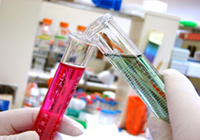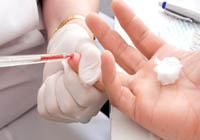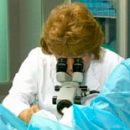Deciphering HCV RNA tests (quantitative), learn detailed information about HCV RNA RNA RT-PCR, which physician consult what the analysis result is talking about.
Content
Decoding HCV RNA analyzes (quantitative)

Quantitative HCV research methods determine the amount of virus in 1 ml of blood and are used to determine the treatment plan and detecting the effectiveness of the selected therapy. The HCV quantitative research includes:
- polymerase chain reaction (PCR) and RT-PCR;
- R-DNA (branched DNA);
- TMA (transcriptional amplification).
RT-PCR denotes a polymerase chain reaction with reverse transcription in real time. This study reveals the pathogen HCV (hepatitis C virus, HCV) in real time. This method is in the detection of the genetic material of the virus — RNA — and virus load in the blood (quantity). Discovery of Hepatitis C virus RNA in a patient speaks not only about presence, but also about breeding the virus in the body. PCR allows you to reveal it for days ten days after infection.
Quantitative decoding of HCV RNA results and average indicators:
- 750 copies / ml — The virus in the blood is absent or is in a minimum quantity;
- less than 2 million copies / ml = 800 thousand. Me / ml — define low viremia, the forecast of the disease of the disease is optimal, therapy should be successful;
- more than 2 million copies / ml = 800 thousand. Me / ml — High Viryia.
The accuracy of the analysis result may violate:
- Contamined biomaterial,
- Chemical and protein substances in the samples of inhibitors;
- Heparin in blood.
To deal with the result of a quantitative HCV RNA analysis will help an infectious hepatologist.









